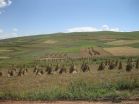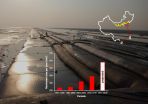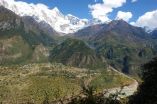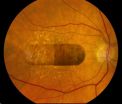(Press-News.org) If you are an active senior who wants to stay younger, keep on running.
A new study involving the University of Colorado Boulder and Humboldt State University shows that senior citizens who run several times a week for exercise expend about the same amount of energy walking as a typical 20-year-old.
But older people who walk for exercise rather than jog expend about the same amount of energy walking as older, sedentary adults, and expend up to 22 percent more energy walking than the 20-something crowd. The study, led by Humboldt State Professor Justus Ortega, was published online Nov. 20 in the journal PLOS ONE.
"The bottom line is that running keeps you younger, at least in terms of energy efficiency," said CU-Boulder Associate Professor Rodger Kram of the Department of Integrative Physiology, a co-author on the new study.
The PLOS ONE study involved 30 healthy older volunteer adults (15 males and 15 females) with an average age of 69 who either regularly ran or walked for exercise. The volunteers all had been either walking or running at least three times a week for a minimum of 30 minutes per workout for at least six months. Boulder was an ideal place for the study, said Kram, in part because it has been an international running mecca since the 1970s and there are a relatively large number of senior runners.
"What we found is that older adults who regularly participate in highly aerobic activities - running in particular - have a lower metabolic cost of walking than older, sedentary adults and also lower than seniors who regularly walk for exercise," said Ortega, who earned his doctorate at CU-Boulder.
"It's been known for a long time that as people age their maximum aerobic capacity, or 'horsepower,' declines, and that is true for runners as well," said Ortega. "What's new here is we found that old runners maintain their fuel economy."
All study participants underwent preliminary health screenings at the CU-Boulder Clinical and Translational Research Center (CTRC), which is funded primarily by the National Institutes of Health.
The test subjects walked on a force-measuring treadmill at three speeds in Kram's Locomotion Laboratory at CU-Boulder: 1.6 mph, 2.8 mph, and 3.9 mph. The researchers measured each participant's oxygen consumption and carbon dioxide production during the testing sessions. For the new study, the team also used data gathered as part of Ortega's dissertation on the energy expended by younger and older sedentary adults during similar walking treadmill tests for comparison.
Other co-authors of the new study are CU-Boulder graduate student Owen Beck, Jaclyn Roby, now a student in the Physical Therapy Program at CU's Anschutz Medical Campus in Denver, and former Humboldt State undergraduate Aria Turney.
"It was surprising to find that older adults who regularly run for exercise are better walkers than older adults who regularly walk for exercise," said Beck. "The take-home message of the study is that consistently running for exercise seems to slow down the aging process and allows older individuals to move more easily, improving their independence and quality of life," he said.
"Walking for exercise has many positive health effects, like fending off heart disease, diabetes, weight gain and depression - it's just that walking efficiency does not seem to be one of them," said Kram. "Because we found no external biomechanical differences between the older walkers and runners, we suspect the higher efficiency of senior runners is coming from their muscle cells."
Specifically, Kram believes that mitochondria -- small bodies found inside individual cells known as the cell "powerhouses" -- are involved. Mitochondria generate chemical energy known as adenosine triphosphate (ATP) that powers our muscle fibers to help us move about, lift objects, and, in this case, run. People who work out regularly generally have more mitochondria in their cells, providing more energy to power larger muscles.
Kram said further research is needed to determine the role mitochondria play in the energy efficiency exhibited by running seniors.
INFORMATION:
To download a free copy of the study visit http://www.plosone.org/browse/ and type the authors' names and institutions into the search box.
Contact: Rodger Kram, 303-492-7984
rodger.kram@colorado.edu
Jim Scott, CU-Boulder media relations, 303-492-3114
jim.scott@colorado.edu
Animal teeth, bones and plant remains have helped researchers from Cambridge, China and America to pinpoint a date for what could be the earliest sustained human habitation at high altitude.
Archaeological discoveries from the 'roof of the world' on the Tibetan Plateau indicate that from 3,600 years ago, crop growing and the raising of livestock was taking place year-round at hitherto unprecedented altitudes.
The findings, published today in Science, demonstrate that across 53 archaeological sites spanning 800 miles, there is evidence of sustained farming and human ...
China's second great wall, a vast seawall covering more than half of the country's mainland coastline, is a foundation for financial gain - and also a dyke holding a swelling rush of ecological woes.
A group of international sustainability scholars, including Jianguo "Jack" Liu, director of Michigan State University's Center for Systems Integration and Sustainability, in a paper published today in Science magazine, outline the sweeping downsides of one of China's efforts to fuel its booming economy, downsides that extend beyond China.
China's coastal regions are only ...
The Himalaya features some of the most impressive gorges on Earth that have been formed by rivers. The geologic history of the famous Tsangpo Gorge, in the eastern Himalaya, now needs to be rewritten.
A team of German, Chinese, and American geoscientists have namely discovered a canyon, filled with more than 500 m of sediments beneath the bed of the present-day Yarlung Tsangpo River upstream from the gorge. Using drill cores, the scientists were able to reconstruct the former valley floor of this river, which allowed them to reconstruct the geological history of the Tsangpo ...
Doctors have long been mystified as to why HIV-1 rapidly sickens some individuals, while in others the virus has difficulties gaining a foothold. Now, a study of genetic variation in HIV-1 and in the cells it infects reported by University of Minnesota researchers in this week's issue of PLOS Genetics has uncovered a chink in HIV-1's armor that may, at least in part, explain the puzzling difference -- and potentially open the door to new treatments.
HIV-1 harms people by invading immune system cells known as T lymphocytes, hijacking their molecular machinery to make more ...
A team of researchers from Caltech and the China Earthquake Administration has discovered an ancient, deep canyon buried along the Yarlung Tsangpo River in south Tibet, north of the eastern end of the Himalayas. The geologists say that the ancient canyon--thousands of feet deep in places--effectively rules out a popular model used to explain how the massive and picturesque gorges of the Himalayas became so steep, so fast.
"I was extremely surprised when my colleagues, Jing Liu-Zeng and Dirk Scherler, showed me the evidence for this canyon in southern Tibet," says Jean-Philippe ...
Bangkok (Thailand)- A recent study from the Thai-Myanmar border highlights the severe and previously under-reported adverse impact of readily treatable tropical rickettsial illnesses, notably scrub typhus and murine typhus, on pregnancy outcomes, finding that more than one third of affected pregnancies resulted either in stillbirth or premature and/or low birth weight babies.
Conducted by Prof Rose McGready and Assoc. Prof Daniel Henry Paris from the Shoklo Malaria Research Unit (SMRU) in Mae Sot, Thailand, and the Mahidol Oxford Research Unit (MORU) in Bangkok, affiliated ...
LEXINGTON, Ky. (Nov. 20, 2014) - A landmark study published today in the journal Science by an international group of scientists, led by the laboratory of Dr. Jayakrishna Ambati, professor & vice chair of the Department of Ophthalmology & Visual Sciences at the University of Kentucky, reports that HIV/AIDS drugs that have been used for the last 30 years could be repurposed to treat age-related macular degeneration (AMD), as well as other inflammatory disorders, because of a previously undiscovered intrinsic and inflammatory activity those drugs possess.
AMD is a progressive ...
Scientists developed a new method which allows to estimate the magnetic field of a distant exoplanet, i.e., a planet, which is located outside the Solar system and orbits a different star. Moreover, they managed to estimate the value of the magnetic moment of the planet HD 209458b.The group of scientists including one of the researchers of the Lomonosov Moscow State University (Russia) published their article in the Science magazine.
In the two decades which passed since the discovery of the first planet outside the Solar system, astronomers have made a great progress ...
MADISON, Wis. -- As real as that daydream may seem, its path through your brain runs opposite reality.
Aiming to discern discrete neural circuits, researchers at the University of Wisconsin-Madison have tracked electrical activity in the brains of people who alternately imagined scenes or watched videos.
"A really important problem in brain research is understanding how different parts of the brain are functionally connected. What areas are interacting? What is the direction of communication?" says Barry Van Veen, a UW-Madison professor of electrical and computer engineering. ...
MADISON, Wis. - The influenza virus, like all viruses, is a hijacker. It quietly slips its way inside cells, steals the machinery inside to make more copies of itself, and then -- having multiplied -- bursts out of the cell to find others to infect.
Most drugs currently used to treat influenza are designed to attack the virus, to render it incapacitated. But influenza viruses are sneaky, capable of mutating to avoid destruction by the drug.
In a comprehensive new study published today in the journal Cell Host and Microbe, the University of Wisconsin-Madison's Yoshihiro ...




